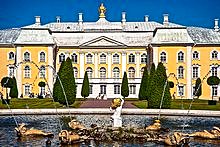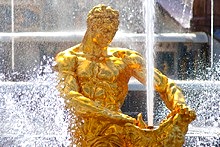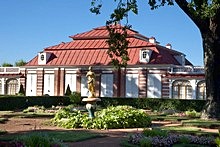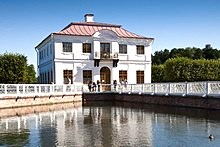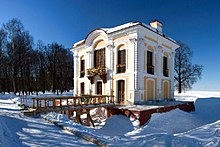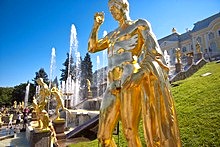Peterhof (Petrodvorets)
One of St. Petersburg's most famous and popular visitor attractions, the palace and park at Peterhof (also known as Petrodvorets) are often referred to as "the Russian Versailles", although many visitors conclude that the comparison does a disservice to the grandeur and scope of this majestic estate.
Versailles was, however, the inspiration for Peter the Great's desire to build an imperial palace in the suburbs of his new city and, after an aborted attempt at Strelna, Peterhof - which means "Peter's Court" in German - became the site for the Tsar's Monplaisir Palace, and then of the original Grand Palace. The estate was equally popular with Peter's daughter, Empress Elizabeth, who ordered the expansion of the Grand Palace and greatly extended the park and the famous system of fountains, including the truly spectacular Grand Cascade.
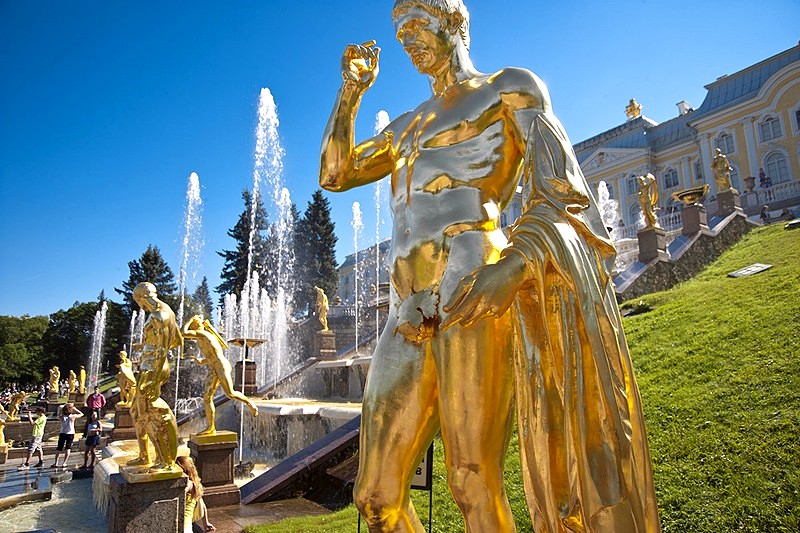
Grand Cascade in Peterhof
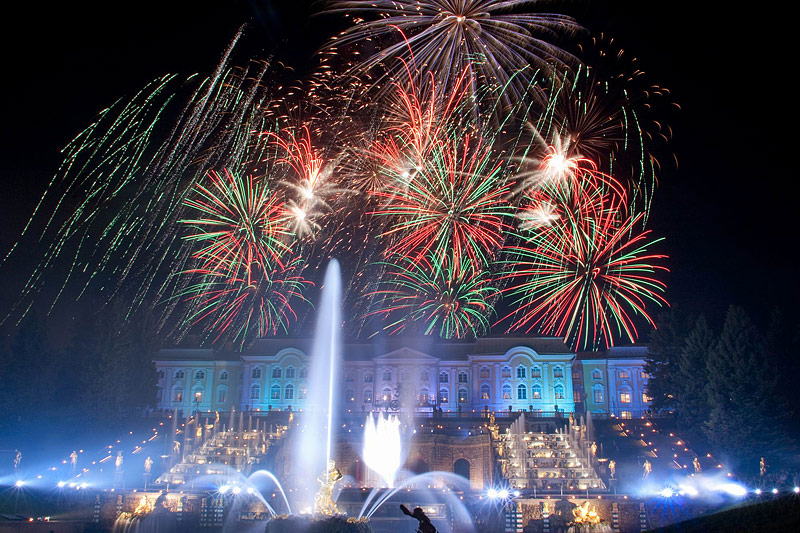
Fountain festival in Peterhof
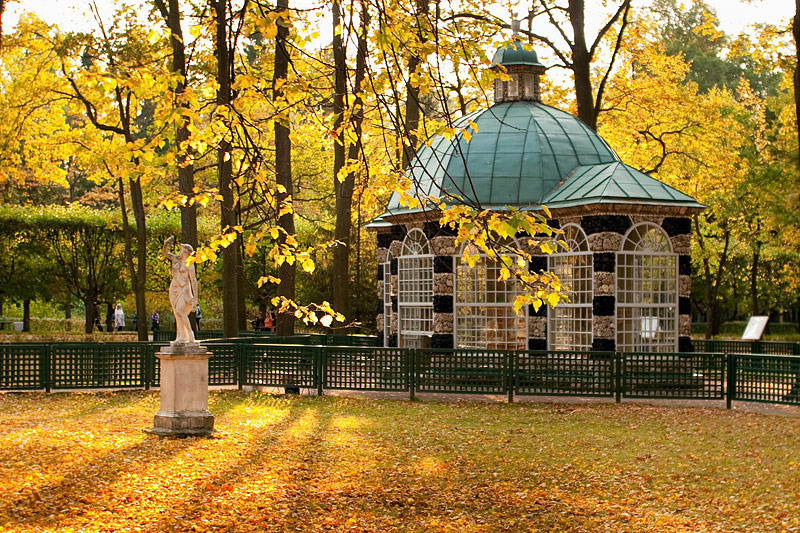
Fall foliage in Peterhof
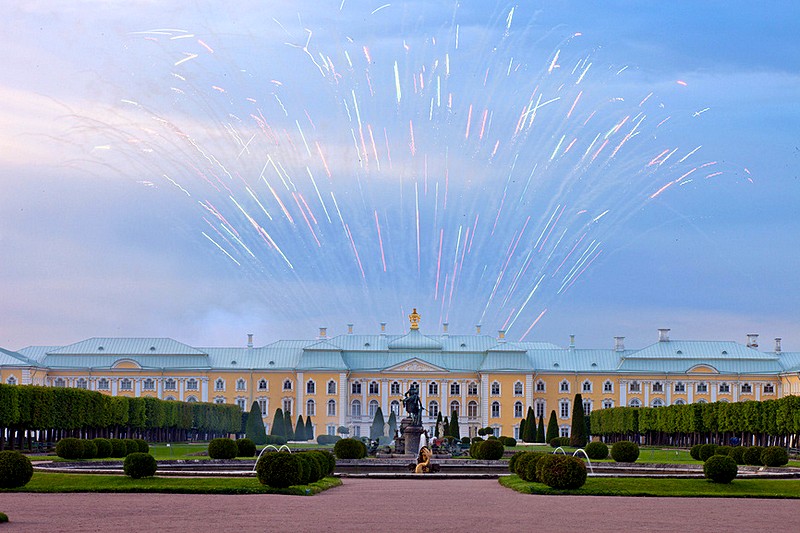
Fireworks over the Grand Palace in Peterhof
Improvements to the park continued throughout the 18th and 19th centuries. Catherine the Great, after leaving her own mark on the park, moved the court to Pushkin, but Peterhof once again became the official Imperial Residence in the reign of Nicholas I, who ordered the building of the modest Cottage Palace in 1826.
Like almost all St. Petersburg's suburban estates, Peterhof was ravaged by German troops during the Second World War. It was, however, one of the first to be resurrected and, thanks to the work of military engineers as well as over 1,000 volunteers, the Lower Park opened to the public in 1945 and the facades of the Grand Palace were restored in 1952. The name was also de-Germanicized in 1944, becoming Petrodvorets, the name under which the surrounding town is still known. The palace and park are once again known as Peterhof.
Empress Elizabeth's Grand Palace may be smaller than it looks, but it has an imposing facade and some stunning state rooms inside.
The extensive parkland at Peterhof was laid out over several generations, and covers a huge range of garden styles, from rococo formalism to the broad vistas of romantic landscaping.
Peterhof is perhaps most famous for its remarkable array of decorative fountains, including the unmistakable and incredibly impressive ensemble of the Grand Cascade.
Peter the Great's original palace is a charming baroque mansion on the shore of the Gulf of Finland, demonstrating the Tsar's exquisite and restrained taste.
Another building that dates back to the Petrine era, this charming mansion was inspired by the French royal hunting lodge at Marly le Roi.
Russia's original Hermitage was only completed after Peter's death, but fully reflects the Tsar's fascinations with novelty and European style.
Nicholas I's Cottage Palace is a gothic mansion of surprisingly restrained proportions, showing the Emperors attempt to separate private family life from his official duties.
A short guide to getting to Peterhof from St. Petersburg, plus details of park opening times, and amenities in the town.





